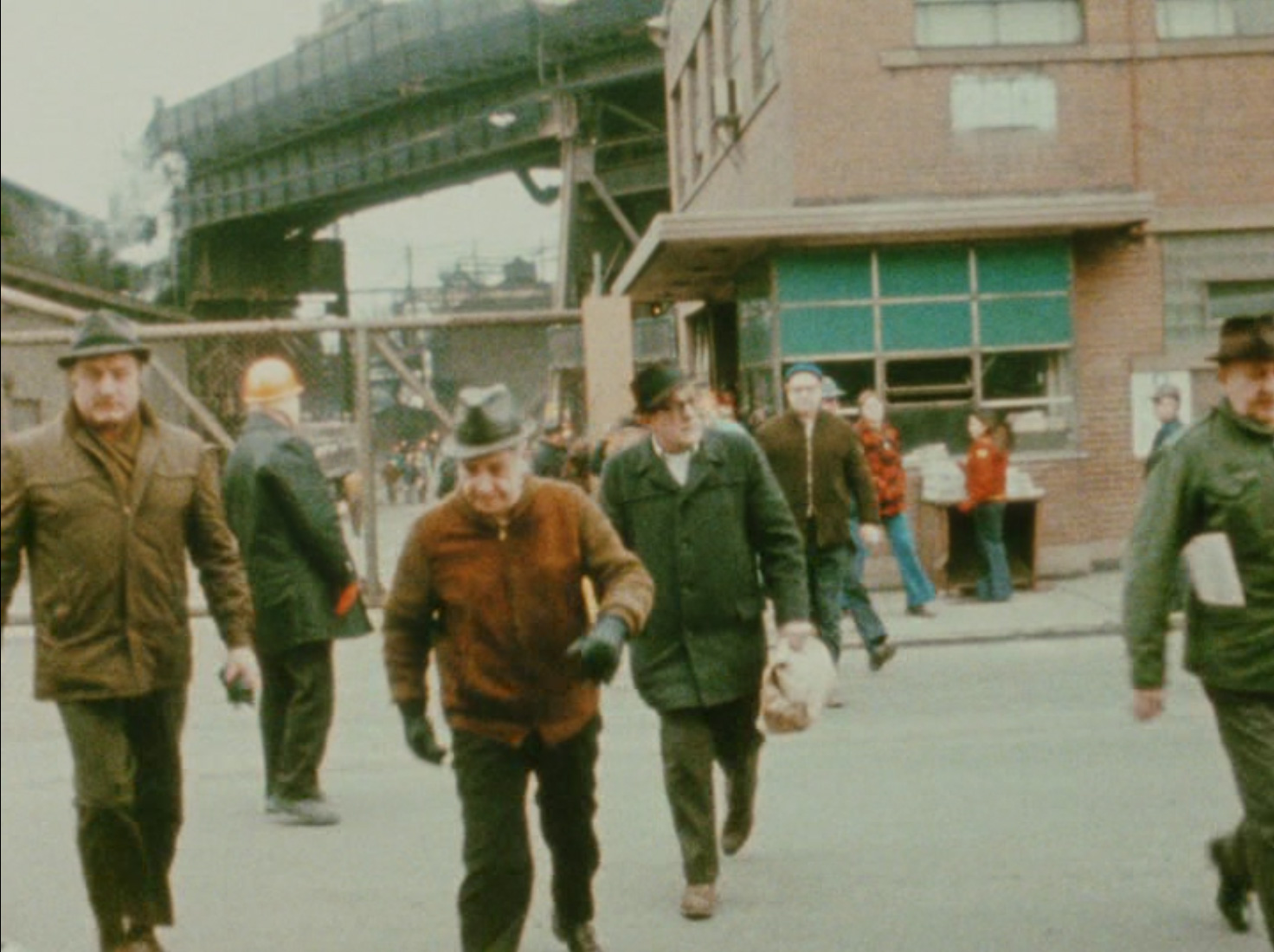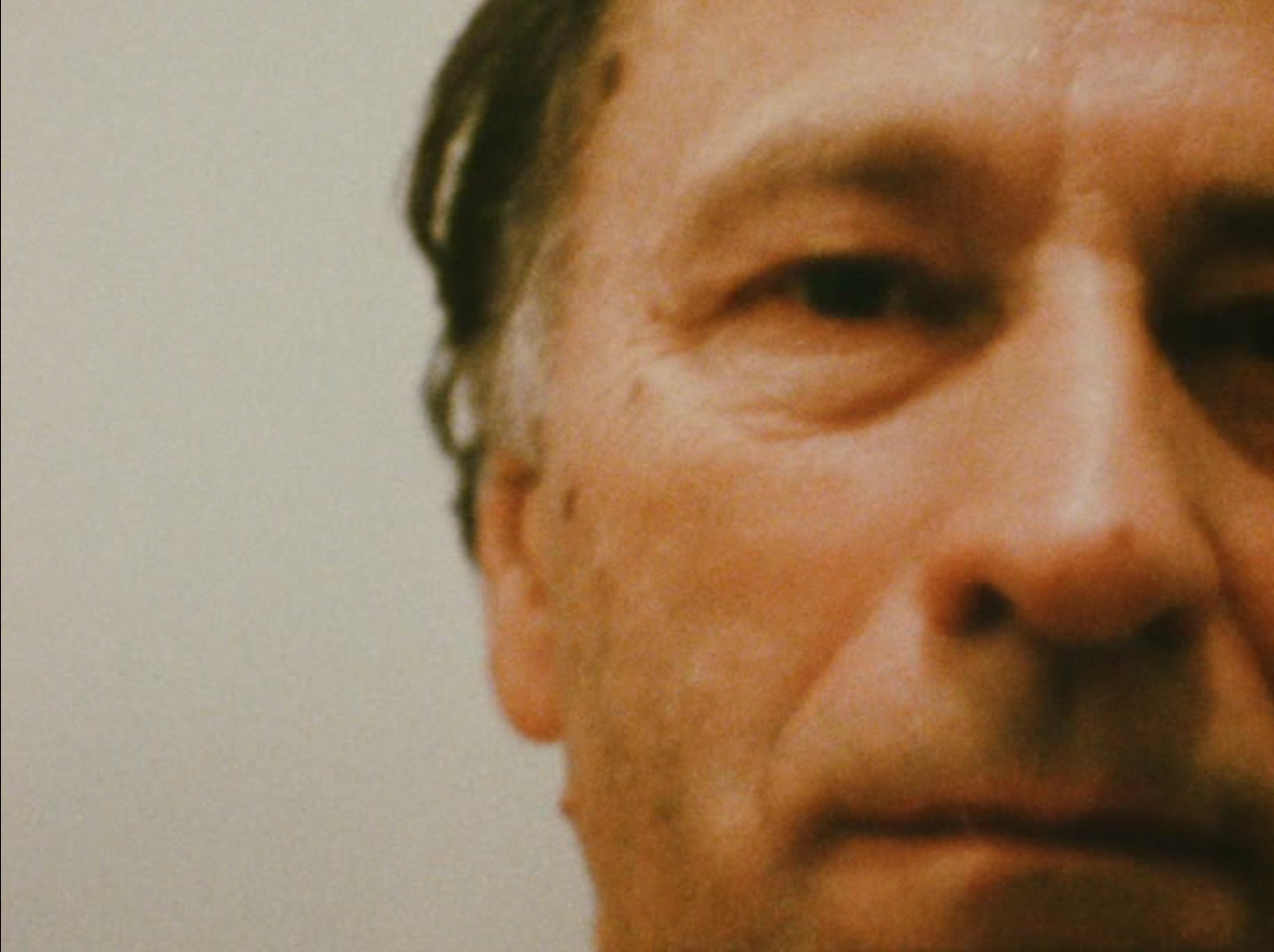He Stands in a Desert Counting The Seconds of His Life
Close Up Film CentreTalk
2022
I was invited to give an introduction to a screening of He Stands in a Desert Counting The Seconds of His Life, a film by Jonas Mekas shown at Close Up Film Centre.
The text below is a transcription of my introduction:
“You keep a diary & the diary will keep you” – Mae West, for Peter Beard
So it is written in one of this films many intertitles, which sometimes poetically and sometimes matter-of-factly introduce each section of footage.
What you’re about to watch is a kind of diary. Mekas constantly filmed over his years in New York, but didn’t always have the time to work on concerted projects or edit footage into completed pieces. But what he did have was reels and reels of 16mm footage – observations and moments from his life.
In his words, the film “covers the period from 1969 to 1984. During the same period I shot much more footage than you see … I am including in this film only the most impersonal footage. Originally, I was planning to call this film Anthropological Sketches. It consists of scenes, sketches of people, activities, happenings, events outside – or almost outside – of my life which I am observing from a slight distance.”
In the opening minutes he shows us factory workers leaving a Pittsburgh steelworks, probably a nod to the seminal footage shot by the Lumières of workers leaving their Lyon factory 78 years earlier. There is a connoisseurship to this film, and its editing, that perhaps may slowly emerge as you settle in and it takes over.

Perhaps that connoisseurship comes because he was not only a film-maker, studying the craft and materiality of the form, but because he deeply rooted himself in everything film of the time – writing, presenting, curating, archiving, creating networks, supporting new artists.
I was fortunate last Sunday to be in Vilnius and went to see an exhibition marking Mekas’ 100th birthday at the National Gallery of Art. Jonas Mekas and the New York Avant-Garde is on until the end of next month, and one of the curators Inesa Brašiškė showed me around – her exhibition specifically explores and brings to the surface his non-film making activities across his decades in New York, and how central they were to his story – perhaps even moreso than his films.
Spread across vitrines were documents, posters, notes, images and more covering the various relationships, institutions, and initiations he was involved with. The founding of various co-operative film organisations – the New American Cinema Group, Film-makers Cooperative, Filmmakers Cinematheque, the Anthology Film Archives. A real moment of Avant Garde, in which film was not just cinema, but crossing into the world of fine art. These infrastructures he created are occasionally part of the film you’re about to watch.
You will see many artists in the film. Hans Richter, Roslyn Drexler, Andy Warhol, John and Yoko, Alan Ginsberg, George Maciunas, Günter Brus, Hermann Nitsch, Nam June Paik, Hollis Frampton, Kenneth Anger, Miles Davis. Most aren’t announced by the intertitles, they are just there, one of a crowd, one of many who came and went in Mekas’ busy life.

Brief glimpses into exciting historical moments – but they shoot past before the eye or mind settles. And, because of that, it perhaps seems a more truthful diary than a written biography, or biopic of a remembered time. It is immediate, snatched, awkward and with the jagged, lurching movements of human eyes and memories.
Still photography of, for example, the Andy Warhol retrospective at the Whitney museum in 1971 mght be able to capture the architecture, design and aesthetic, but in Mekas’ shaking, irregular cinematography, there is also an energy and presence which somehow makes the viewer feel as if you too are there, decades later, and that it isn’t an historical moment.

But these are not only important moments Mekas allows us to experience cinematically, they are also the incidental, accidental, personal, and mundane. There are trips through central park, strangers on the street, a coy smile from Mekas as he paddles a boat, George’s wedding, then a hospital visit, then a crematorium.
Mekas says that these are “portraits of people I have spent time with, places, seasons of the year, weather, many of my film-maker friends, streets and parks of New-York, brief escapes into nature … nothing spectacular, all very insignificant unimportant celebrations of life that has gone, and remains only as a record in these personal, brief sketches”.
Dates jump around, just as they do in memories. Places collide. After a thoroughly urban edit of people and activity of Ontological Hysteric Theatre in which playwright Richard Foreman called a New York phone box from Paris, we are suddenly thrusted into rural Austria at his friend’s house, a slower way of life, with alcohol, conversation, and chickens.

In a short visit to London, Peter Kubelka crosses Waterloo Bridge in 1970. We get that famous eastwards view towards the City, but a very different city to today. So the film acts as a diary of Mekas’ nostalgia and fragmented recollections, but also as a shared nostalgia – a quality perhaps enhanced through the medium of analogue film more than might be possible with HD video recorded on smartphones today – thought let’s wait until 2059 and check back.
Later we see a glimpse of a public protest march, and a banner declaring solidarity with the people of Palestine, and for all its analogue reach into the past, we also wonder how some history just doesn’t end.
Abrupt editing, jagged camera work, it might be hard to watch at first, but over time becomes more hallucinogenic, and enticing. But it is also hard work to watch, nothing here – even the trips to the country or rowing on a lake – are relaxing. Each scene seems urgent.
It makes me think of Christian Marclay’s 24 hour long work The Clock in which scenes of films featuring or mentioning time are edited together chronologically, each matching the real time of day for the viewer. In it, the scene is disconnected from the last and next, and may be mundane or unspectacular, but the viewer finds it hard to tear ones eyes away even knowing it’s a chaotic ride of disconnectedness, because each scene feels important and to step away at any moment a kind of journey will be broken and lost.
At one point, the camera catches the Empire State Building on a rainy day in November 1973. Like the Lumière reference, perhaps this is also a pointer to another film – 1965’s Empire by Andy Warhol, which consists of a static view of the building overnight, lasting 8 hours. Not only was Mekas cinematographer, but probably also the reason it came about, having told Warhol of the idea his friend, Englishman John Palmer, had had. Empire debuted at the Film Makers Cinematheque, a regular screening event and vast archive of experimental film Mekas founded.

And, as you’re about to watch two and a half hours of Mekas’ own work, I hope the duration doesn’t piss you off as much as some of the audience of Empire’s first screening – I will leave you with the words Mekas himself wrote in his Village Voice column:
“The premiere of Andy Warhol and John Palmer’s eight-hour epic “Empire” movie took place at the Cinematheque last Saturday night. It was a glorious event and a glorious day for the Empire State Building. Ten minutes after the film started, a crowd of about 30 or 40 people stormed out of the theatre into the lobby, surrounded the box office, Bob Brown and myself, and threatened to beat us up and destroy the theatre unless their money was returned. “This is not entertainment! This movie doesn’t move!” shouted the mob.
Oh, what a blind eye! They were threatening to solve the question of the new vision and new cinema by breaking chairs on our heads. The gulf is still widening between the old and the new. The old will fall off by itself soon, like a dead potato. Artists shouldn’t waste a single drop of their lives fighting the old: we should continue and concentrate on our creation, on the creation of the new, because the old will die by itself. Truly, the old has died long ago: it is its spectre that haunts us.”
